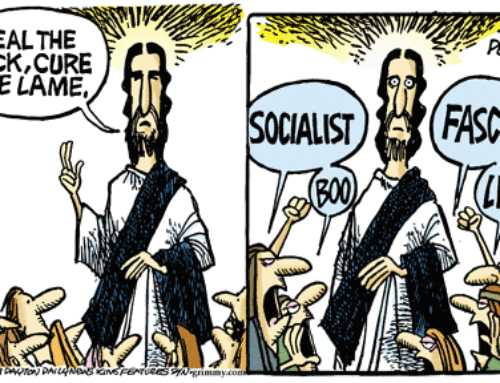i have just started reading a book called ‘Exiles – Living Missionally in a Post Christian Culture’ by Michael Frost and wow i am really digging it – read it!
christians like to throw around the phrase ‘Jesus was fully man and fully God’ and that has never made sense to me – i understand that a carrot can be fully a vegetable and fully a food because both things are the same and one is actually a subcategory of the other (um if you’re not sure which one is which then this blog probly isn’t for you – go find something with pictures you can ‘ooh aah’ at) – but being fully God contradicts being fully man and vice versa. And so it has never sat well with me and it is also something that can’t – i don’t think – be backed up by scripture – it’s just one of those things that someone heard once from someone else and so it’s true and so we hold to its being true but we don’t really know why and we don’t really question
[and just to fully p.s. myself i don’t think it really matters either way – feels like one of those christian arguments people might fight duels to the death over like predestination and how the end times are going to play out which don’t really have any effect on how we live now so it doesn’t really matter but is an interesting thort to get your head round all the same]
anyways i really like how this book describes the whole concept. picture a picture (ooh, come back picture bloggists, this is for you after all) of a circle with Jesus in it and fully human and fully divine in it – that seems to be how the majority of people view this thing. then, the picture that i ascribe more to [which, yes, really doesn’t matter] is a picture of two circles – one with Jesus as human, one with Jesus as Divine – which overlap each other in the middle – so some bits of Jesus that were simply Jesus as Divine and some bits of Jesus that were Jesus as human and then this middle section which overlaps where Jesus is shown to be a bit of both
Michael Frost talks about how the place of incarnation (divine becoming human, so the overlap) is a dangerous place:
‘Probably the most dangerous aspect of the Christ story is the very nature of the incarnation itself. Jesus models that it is possible to be both God and human at the same time. This is for us, certainly, the most terrifying thought. Throughout history the church has retreated into deifying Jesus so thoroughly that the human Christ can’t be seen [actually maybe this is where this line of thinking actually does make a difference – brett]. If indeed Jesus is too human (or barely human at all) He calls from me a worrying response. He challenges my humanness and demands more from me than I can imagine offering. An overly deified Christ reduces my perceived response. To this otherworldly, superspiritual Jesus I simply have to offer my devotion, my worship, my adoration. By the grubby, human, peasant Jesus I am challenged that maybe it is possible to be human and Godlike after all. Nowhere in Scripture is this more disturbingly presented than in Jesus’ return to His hometown after the beginning of His messianic ministry. There, Jesus began teaching in the synagogue and received what to me has always seemed a deeply shocking response. The locals, His old boyhood friends and neighbours, are offended and say,
“Where did this man get the wisdom and these miraculous powers? Isn’t this the carpenter’s son? Isn’t his mother’s name Mary, and aren’t his brothers James, Joseph, Simon and Judas? Aren’t all his sisters with us? Where then did this man get all these things?” [Matthew 13.54b-56]
How distressing to us that Jesus could be the Messiah, the human incarnation of God, second person of the Trinity for thirty years and no one at home noticed! No one in Nazareth smiles knowingly and says, “I always suspected there was something strange about that kid.” Instead they wonder where he got all this messianic stuff. Somehow Jesus could be fully God and blend into Galilean society – hardly the most pious or sophisticated culture – without creating a ripple. This perspective on the incarnation bothers us because it dangerously invites us to follow Christ in all his ordinariness as well as His righteousness. The incarnation demands that we neither retreat into a holier-than-thou Christian ghetto nor give ourselves over to the values of secular culture. And let’s be honest: this is the most dangerous place of all. It is easier to imagine and embrace a closed fundamentalism that retreats into a Christ-against-culture mindset. We can picture Jesus there, all holy and pure, unsullied by the world around Him. We can also understand the capitulation to our host culture that some christians make. It would be easy to join those christians who abandon themselves to materialism, greed, and selfishness.
When responding as exiles in a post-Christian world, we are used to seeing some respond with despair and grief (the fundamentalists) and others with assimilation to the dominant values. What is much more disturbing to us is the example of a God who does neither, but instead answers with a fresh, imaginative, theological response. Jesus neither slides into compromise and sinfulness, nor fulfils our expectations of the holier-than-thou guru. The fact that both Matthew and Mark include this episode in their biographies of Jesus is remarkable. The story almost completely undermines claims about the divinity of Jesus. It is included because it is a dangerous memory for followers of Christ. We are called, like Christ, to be godly, but we are expected to live it out fully in the midst of others. There is no more dangerous path than the one trodden by Jesus.’
wow. wow. wow.
to sum up my feelings on the circle overlap – for me the fact that Jesus had to eat and drink and go to the toilet makes Him human and not God (God doesn’t have to do that) and the fact that He performed miracles and was resurrected makes Him God and not human (humans can’t do that) but the fact that He did the miraculous stuff while doing the every day stuff while limited to a human body makes Him both God and human with bits of overlap. semantics perhaps but perhaps also not – he showed that it is possible to live that life which is the thing that needs to hit me squarely . between the eyes, and does.






Dude! thanks… this is great stuff!
Hey
Great point and more importantly, great challenge!
But just a comment on your dislike for the “fully man and fully God” phrase. I don’t think it is entirely un-scriptural or just something someone made up for the fun of it.
With your overlapping circles it leaves the option for people to chose to believe that Jesus wasn’t fully God as there are sections of the God circle that He’s not in then (which leaves me able to think, He can’t really save me / He’s less than God / He’s not truly worthy of all adoration/only the unknown seen and unknown Father is fully God …etc…leads to some major problems)
Ja, it doesn’t really make any sense how He’s fully both, but He is/has to be, it’s just part of the mystery of God i guess.
Brett, interesting thoughts. It is, in fact, one of those issues that people have died for, and we can’t say that it doesn’t matter either way. Its one of the biggest things that matters, and has been in the history of the church. It defines, as Frost points out, how we live in the world. And its not just a matter of semantics, although it has got to do a lot with words!
So its true that Christianity is unique in that it takes flesh and matter and this world seriously, redeeming it; whereas in other religions salvation is an escape from this world. But our understanding of the incarnation and the deity and humanity of Jesus are crucial to how we understand salvation.
So I think that the ‘overlap theory’ doesn’t quite fit biblically, and creates big problems. The bit about bits of Jesus being human and bits of him being divine and some of them overlapping makes less sense to me than the ‘fully human, fully God’ picture. Of course God doesn’t eat and drink etc, but that doesn’t mean Jesus, as God, didn’t do those things. Lets ask a few more questions along that line: which ‘part’ of Jesus shows compassion, weeps over sin, becomes angry at injustice? But most importantly, who endured suffering and died on the cross? If we say, ‘it must have been the human part of Jesus’, we’ve got huge problems! Our salvation is in the fact that it was the God-man who died for us; not merely a man, and not just God in a human shell.
John 1:1-14 is crucial to our understanding: “In the beginning was the Word, and the Word was with God, and the Word was God.” (v.1) “And the Word became flesh and dwelt among us…” (v.14).
My point is that the whole of Jesus is God (the Word who is God, becoming flesh), in essence.
I guess I’m saying that there are no bits outside the overlap of incarnation, the overlap is actually complete (contrary to your last paragraph). Frost’s observations on the implications of incarnation for us are striking, but I think the model of incarnation needs some work.
hm, okay barry, i would imagine in essence we think and see things the same cos what you are saying i’m saying in terms of bits of Jesus this and bits of Jesus that i’m not and maybe the overlap theory is then as flawed as the fully/fully theory in terms of saying exactly what is meant – i believe Jesus is fully representative of God and man which is why He is able to forgive sins and so on and die in our place representationally – but i think what might explain my position more (and words really are not working effectively here) is that Jesus was in a sense more than man (in terms of the divine stuff He was capable of in terms of being God) and He was in a sense less than God (in terms of how He limited Himself to not being able to be everywhere at once, knowing everything, being all powerful – He died – when He was in human form) both at the same time… so still man but different, and still God, but different – but not fully/fully…
Brett, thanks for clarifying, and yes, words have always been difficult in this discussion (think of how the early creeds are worded as they grapple with explaining this). Anyway, the fully/fully explanation still seems best to me (even as it contains a mystery), and why the early church settled on the fact that Jesus is ‘in essence’ fully God. E.g. you say that you believe Jesus is fully representative of God and man – that’s precisely because he is fully God and man!
I would say that aspects of his deity that he gave up/limited himself (‘made himself nothing’, humbled himself’ – Phil 2:7-8) like his omnipresence, and his restraining of his power for the purpose of conquering sin and death according to the plan of God, do not make him ‘less than God’ – I guess that’s the kind of phrase that makes me a bit uncomfortable. So, I do see what you’re saying but I think we need to be careful how we express this mystery of the incarnation because of its importance.
hmm.. think this can also be imagarized in the form of jesus being an ambassador of God, he is God but he came down to earth and took on human form and life to bridge the broken relationship between god and man, in the same way and ambassador would leave the country that he belongs to and become one of the people of the nation he is sent to and improve relations between the 2 nations